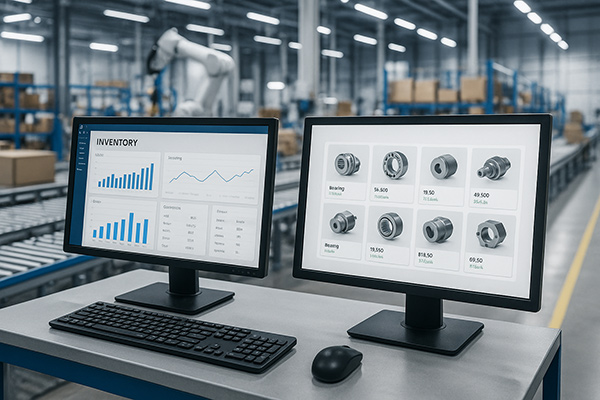Personalized catalogs and self-service tools can help manufacturers retain customers and capture market share.
By Michael Netto
As manufacturers grapple with external challenges like tariffs and supply chain disruptions, they could be losing customers to an internal problem that’s entirely within their control: their ecommerce platform.
According to Deloitte, 13% of B2B sales are lost because of negative customer experiences during the purchasing process. These bad experiences can stem from generic, outdated product catalogs. Disorganized product information and general pricing terms frustrate buyers making complex, high-value purchases.
When you’re shopping as an individual consumer, you wouldn’t sift through dozens of pages of miscellaneous pants, shirts and dresses to find the pair of shorts you want. You’ll take your business elsewhere. The same is true of B2B buyers. Nearly three-quarters of survey respondents said they’d switch suppliers if a competitor offered a better experience.
Deloitte found that 7 in 10 B2B companies described their sales process as moderately to extremely manual. Given that statistic, manufacturers have a real opportunity to capture market share by customizing the buying journey in their B2B ecommerce platform.

Manufacturing catalogs contain thousands of SKUs, and procurement teams are looking to buy specialized products in bulk at account-specific pricing. Traditional web stores force manual searches and typically show prices that are irrelevant to the buyer’s negotiated terms. Shoppers often have to contact a salesperson to guide them to the right product or calculate the correct costs. This isn’t how most people prefer to operate; three-quarters want a self-service experience.
A personalized catalog gives customers the information they need to make decisions, accelerating the transaction and creating a straightforward, positive experience. An optimized B2B ecommerce platform should provide:
More than three-quarters of B2B buyers expect personalization in their customer journey. The complexity of B2B buying makes this customization more difficult — and more important — than in a B2C environment. Manufacturers need systems that streamline catalog management for a better customer experience. Here are some best practices to consider.
Offering this robust ecommerce experience requires collaboration across the company. The product team must maintain accurate specifications, the sales team must manage contract pricing and the operations team must keep inventory data current. There are many points at which this could break down.
Technology can overcome obstacles, such as fractured communication and manual updates. Integrating ecommerce platforms with other business systems enables real-time synchronization. Each team can update information in the tools they use, and it’s automatically available in the catalog and to the entire organization.
AI-powered tools can also enhance customization capabilities. These algorithms analyze all of a customer’s data to move beyond generic industry suggestions to specific recommendations based on previous purchases and a customer’s negotiated discounts. AI also supports account-specific pricing displays and guides customers through building customized product configurations.
While manufacturers cannot control external factors like tariffs, they can prioritize optimizing internal processes to shore up revenue. Ecommerce is a good place to start. If manufacturers can provide a B2C-like experience, they will build loyalty among current customers and attract new buyers looking to move beyond manual purchasing. A strong customer base enables companies to weather economic turmoil.

About the Author
Michael Netto is Executive Vice President, Ecommerce at k-ecommerce. He has a strong background in professional services and leadership, guiding teams to deliver innovative ecommerce solutions focused on growth, operational excellence, and driving lasting results. A lifelong learner, he holds a Bachelor of Commerce and a Graduate Certificate in Teaching and teaches leadership at the university level.
More from the author:
Amazonifying B2B E-Commerce | Supply & Demand Chain Executive, July 8, 2025
The Hard Truth About B2B eCommerce, Episode 155, July 9, 2025
In this episode, I sat down with Beejan Giga, Director | Partner and Caleb Emerson, Senior Results Manager at Carpedia International. We discussed the insights behind their recent Industry Today article, “Thinking Three Moves Ahead” and together we explored how manufacturers can plan more strategically, align with their suppliers, and build the operational discipline needed to support intentional, sustainable growth. It was a conversation packed with practical perspectives on navigating a fast-changing industry landscape.